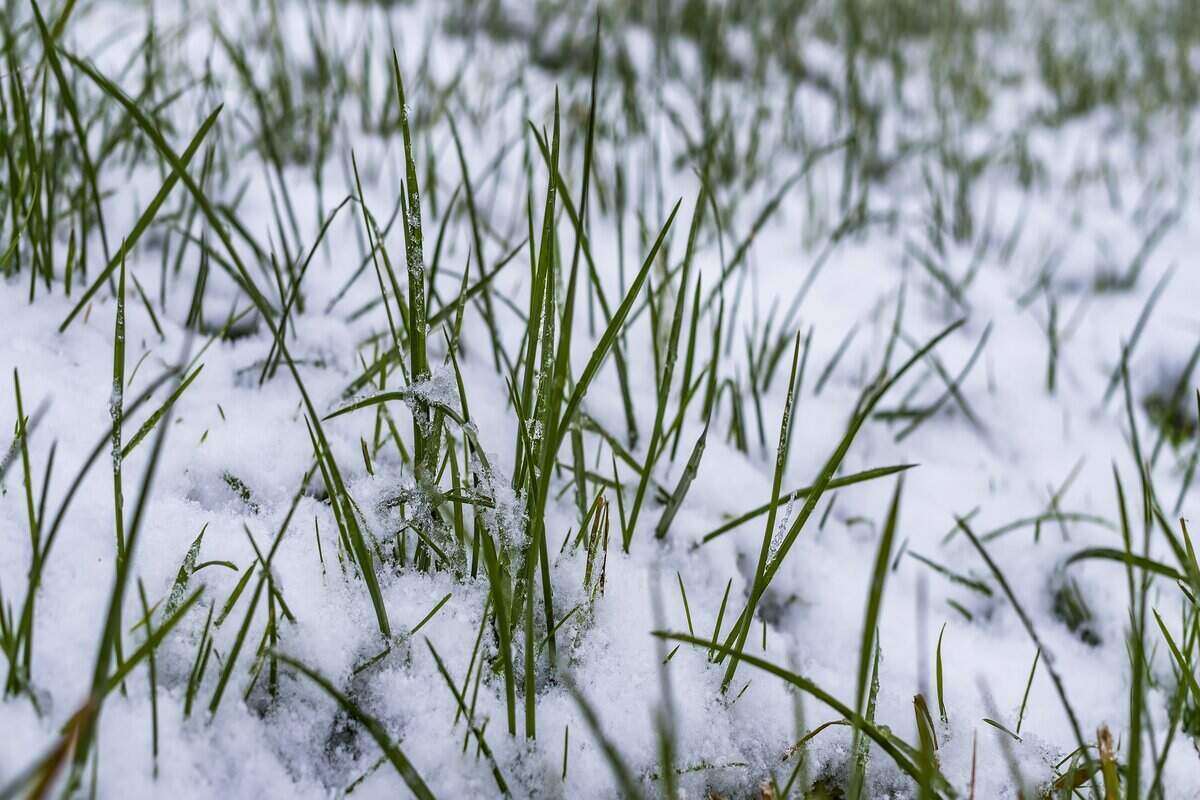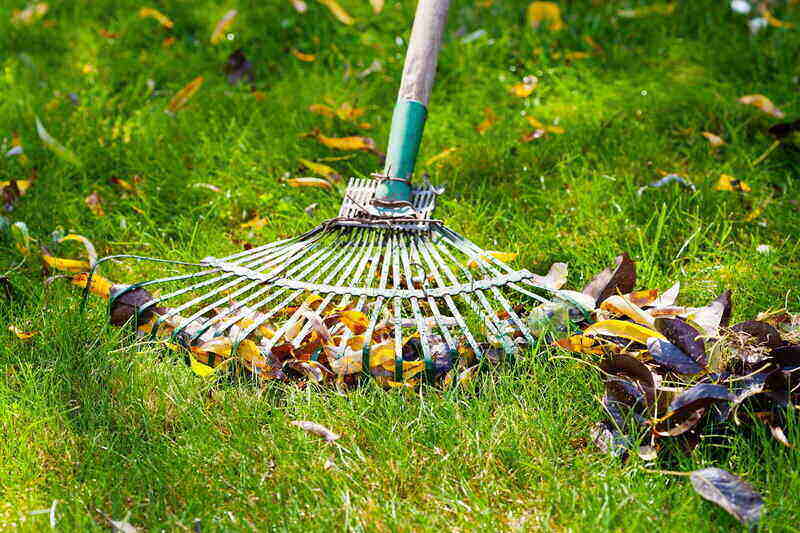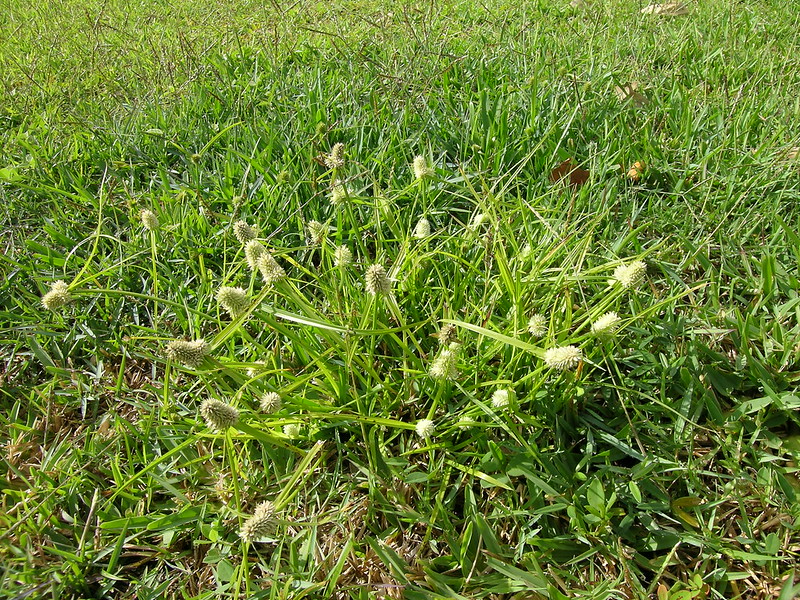
Throughout the growing season, you keep your lawn beautiful by sowing seeds, mowing, weed control, and fertilization. Did you know that you also have to prepare your lawn for winter if you want it to survive the freezing temperatures of North Texas? In this article, you’ll learn different winter lawn care tips for Dallas that can keep your grass healthy and thriving for next spring.
This article includes the following:
- Fertilization in Winter
- Minimizing Soil Compaction
- Winter Lawn Mowing
- Removing Leaves Before Snow
- Clearing Debris
- Winter Weed Control
- FAQ
Fertilization in Winter
In the dead of winter, when your grass is totally dormant, you absolutely should not fertilize it. You’d be helping the weeds grow, not the grass. However, an application of winter fertilizer in late fall, after the last mow of the season, will help your grass survive and thrive through the coldest parts of the year.
You also have to be careful not to fertilize too early come spring. Wait about 4-6 weeks after the last frost of winter before you fertilize. The last frost date in Dallas usually comes in early March, so you should be good to fertilize in early April.
Minimizing Soil Compaction
Soil compaction occurs in the winter when heavy snow is allowed to build up on the lawn or when the lawn sees a lot of foot traffic, especially from heavy equipment such as a snowblower. Compacted soil will weaken the grass, cutting off the roots’ access to water and essential nutrients.
Since your dormant grass is already vulnerable in winter, the last thing you want is to weaken it further with soil compaction. Avoid walking on the lawn too much or moving heavy equipment across it in the winter, and don’t let the snow pile up too high.
Winter Lawn Mowing
Your grass’s growth will slow way down when temperatures reach about 40° F, which usually happens in Dallas around December. Once growth slows, you won’t need to mow your lawn again until it greens up in spring. In fact, dragging a heavy lawn mower across your dormant winter lawn could cause soil compaction (discussed above).
The final time you should cut your grass before winter depends on the type of grass you have. The best grass types for Dallas are all warm-season grasses, which typically go dormant in October when daily temperatures drop consistently below 65° F. When the grass goes dormant and seems to stop growing, that’s your cue to stop mowing for the winter.
Removing Leaves Before Snow

If there are leaves left over on your lawn from the fall drop, be sure to clean them up before the first snow or freeze of the year. Leaves make a great home for lawn pests, and they’re even more inviting when they’re soaking wet from melting snow or frost.
What’s more, a buildup of leaves can suffocate your grass, blocking its access to sunlight and oxygen. Once again, you don’t want to stress your grass out even more when it’s already at its weakest point in winter.
Clearing Debris
As the first frost of winter approaches, clearing the lawn of waste such as tree branches or pet waste can help keep it healthy and in good condition. As with leaves, the weight of fallen limbs on the lawn can suffocate the grass and cause soil compaction. Excessive pet waste invites winter lawn pests and diseases.
Winter Weed Control

To avoid winter weeds altogether, you can apply a pre-emergent herbicide between August and November as part of your annual fall lawn care schedule.
If you skipped the pre-emergent in fall, look out for these common winter weeds in the Dallas area:
- Henbit
- Chickweed
- Annual bluegrass
Once weeds have sprouted, it’s too late for pre-emergent herbicides to work. Instead, you’ll want to hand-pull these weeds as your first resort. Make sure to dig out all the roots, or they’ll come back. If there are too many weeds to hand-pull, that’s when you can turn to a post-emergent herbicide.
FAQ About Winter Lawn Care in Dallas
Dallas’s warm-season grass types enter a dormant state in the winter, so they turn tan or yellow. Don’t worry, though, they aren’t dead. They’re just resting and preparing for a new season of healthy growth come spring. The grass should begin to green up again once temperatures rise.
We suggest using fertilizers containing potassium and a pre-emergent herbicide just before winter. They prevent winter damage to grass and also help prevent winter weeds.
You can find many fertilizers specifically designed to help your grass survive winter, including these products:
• Winterizer Lawn Fertilizer
• Jonathan Green Winter Survival Fall Lawn Fertilizer
• Scotts Turf Builder WinterGuard Fall Weed & Feed
Apply a modest rate of nitrogen to Texas lawns once in the spring and again in the fall, no later than six weeks before the projected first frost.
Final Thoughts
Heavy snowfall is unlikely in Dallas, but icy rain and cold temperatures still cause concern, especially for your lawn. Problems that arise from a lack of proper winter lawn care will carry over into the spring, making it difficult for your grass to grow healthy in the new season. If you need help reviving your grass after a tough winter, reach out to a lawn care pro in Dallas.
Main Photo by: Pixabay